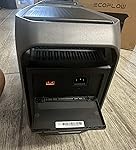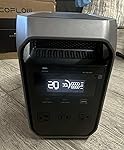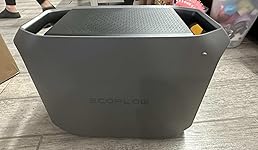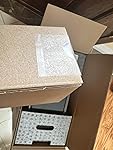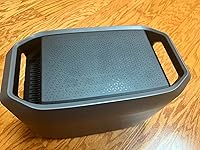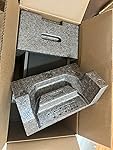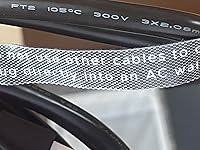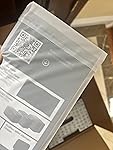EF ECOFLOW Solar Generator DELTA 2 with 220W Solar Panel, 1024Wh LFP(LiFePO4) Battery, 1800W AC/100W USB-C Output, Fast Charging Portable Power Station for Home Backup Power, Camping & RVs


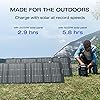


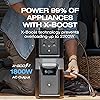
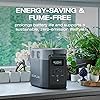


Buy Now, Pay Later
- – Up to 36-month term if approved
- – No impact on credit
- – Instant approval decision
- – Secure and straightforward checkout
Ready to go? Add this product to your cart and select a plan during checkout.
Payment plans are offered through our trusted finance partners Klarna, Affirm, Afterpay, Apple Pay, and PayTomorrow. No-credit-needed leasing options through Acima may also be available at checkout.
Learn more about financing & leasing here.
Selected Option
Non-returnable. Transportation of this item is subject to hazardous materials regulation
View our full returns policy here.
Style: DELTA 2+220W
Features
- Clean, Green Charging. With up to 500W of solar panel input, DELTA 2 is a solar generator that can be charged while camping, on an RV trip or off-grid. Includes a 220W Bifacial solar panel to capture up to 25% more energy.
- Built to Last 6x Longer. Its LFP battery chemistry makes for a portable power station with a 3000+ cycle life. Enough for years on end of use. With a sophisticated BMS, you can go easy knowing its an auto-regulating portable battery to keep you safe.
- Power Almost Anything. Solar powered generator have come a long way. Power all your appliances with 1800W output, that's on par with outdoor generators without the fumes or noise. With 15 outlets and its huge output, you can power 90% of your appliances.
- Expandable Capacity from 1-3kWh. With the standalone portable power station sporting 1kWh, you can add on extra batteries to reach up to 3kWh. Ideal for camping, RVs or home backup power.
- What you Get. DELTA 2 Power station, 220W Solar panel, Adjustable kickstand case, AC charging cable, Solar charging cable, User manual, and an exclusive 5 customer service.
- *DELTA 2 and 220W Portable Solar Panel will be arrived separately.
Brand: EF ECOFLOW
Wattage: 1024 Watt-hours
Fuel Type: Electric
Power Source: Solar Powered
Recommended Uses For Product: Camping
Item Weight: 58 Pounds
Voltage: 120 Volts
Output Wattage: 1800 Watts
Special Feature: 7x Faster AC charging, Built to last 6x longer, Control from anywhere, Expandable capacity, Huge AC output See more
Included Components: 220W bifacial foldable solar panel, AC charging cable, EcoFlow DELTA 2 portable power station, Solar charging cable See more
Product Dimensions : 15.7 x 8.3 x 11.1 inches; 58 Pounds
Item model number : EFD330
Date First Available : September 21, 2022
Manufacturer : EcoFlow
Best Sellers Rank: #327 in Patio, Lawn & Garden (See Top 100 in Patio, Lawn & Garden) #3 in Outdoor Generators
#3 in Outdoor Generators:
Customer Reviews: 4.7 4.7 out of 5 stars (7,350)
Frequently asked questions
Similar Products
Top Amazon Reviews
🚀 Abunda's Overview
This is our summary and key points to consider based on customer reviews.
The EcoFlow Delta 2 is praised for its portable convenience, high capacity, and flexibility with power sources. It is described as a game-changer for outdoor activities and emergency situations, capable of handling a range of appliances and devices with ease. Its rapid charging ability, particularly with optional solar panels, is highlighted, alongside its lightweight and manageable size.
Pros
- 🔋 High capacity, capable of powering a mini-fridge overnight with power to spare.
- ⚡ High output wattage, with 1800 output watts able to run various appliances.
- 📱User-friendly app UX/UI for convenient control and monitoring.
- 🔌 Rapid AC charging and compatible with solar panel charging for on-the-go power.
- 🚚 Portable and lightweight design, facilitating easy transport for outdoor use.
Cons
- 🔊 AC charging can be loud at max speed, potentially disruptive in quiet environments.
- ⚠️ Protective covers over input ports may snag and tear, a minor annoyance for some users.
Should I Buy It?
If you are in need of a reliable, high-capacity, and portable power solution for a variety of settings, the EcoFlow Delta 2 comes highly recommended. Its ability to power a wide range of devices, ease of use, and fast recharging options make it a solid choice. Consider the noise it can produce during high-speed AC charging, but this portable power station appears to tick all the right boxes for most needs.



